Distributed generation: Saving Drowning People in the Hands of You Know Who
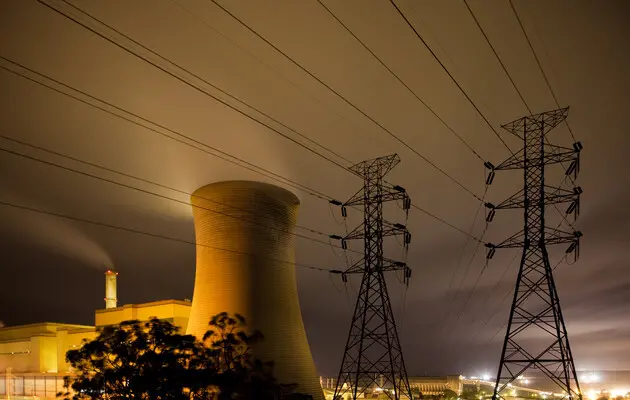
The Cabinet of Ministers of Ukraine again started talking about energy decentralization. The existence of the so-called distributed energy in Ukrainian conditions means that instead of fifty large power plants, thousands of small and dispersed objects become targets for the enemy. Which, understandably, are more difficult to destroy.
In the third year of the war, political leaders in Pechersk, as usual, discovered that they had again missed an important topic for the country in their conversations. The previous peak of interest in the creation of distributed energy was back in the first war fall, during the first attempt of the Russian Federation to destroy our energy system.
People and businesses then began to massively import generators of all types and sizes. It is worth noting that during the winter of 2022/2023 they were imported with a total capacity of over a million kilowatts. Partners also got involved. Almost half of the officials associated with the energy sector took a selfie near the imported American turbine. And then everything turned out as always: the Russians failed to destroy the power system, in the spring of 2023 the massive shelling ended, and with them, interest in the topic also faded.
Everyone was busy: energy companies were repairing equipment, and the Ministry of Energy of Ukraine and political leaders on Bankova Street were drawing plans, the scale and courage of which even Baron Munchausen would envy. Among them, for example, is a pan-European hydrogen hub with tens of millions of tons of hydrogen. In addition, another project is the semi-secret but no less delusional Energy Strategy of Ukraine, which has been worked out until 2050, with dozens of nuclear units.
There was no money for all this, but it apparently had to be provided by enthusiastic foreign investors. After all, for this you just need to make a compelling presentation that will amaze them both visually and with its ambition and scale...
The foolishness and gullibility of foreigners turned out to be greatly exaggerated – interest in domestic visionary nonsense was at zero level. And most importantly, all these absurd projects were done just at the time when it was necessary to roll up our sleeves and get down to business, namely, to work on the development of distributed energy.
But there was no mention of energy decentralization in any document. Even at a basic level, nothing was done in this direction. During the year, neither the procedure for connecting such installations, nor simplifying the procedures for connecting them, nor a program of preferential, at least targeted lending, were adopted. In general, the year was successfully thrown down the drain.
It’s even surprising that, as it turned out, the Ukrainian energy sector is full of people with visionary goals, but no attention was paid to such obvious needs. Apparently, because decentralization also concerns cash flows, which immediately discourages the interest of functionaries who, on the contrary, are accustomed to centralizing these flows.
And then the winter of 2023/2024 passed surprisingly calmly. Naturally, there were impacts on substations and thermal power plants, but much weaker. Thanks to the intense, often heroic work of energy workers, the consequences of rocket attacks and shelling were dealt with.
In Pechersk, political leaders began to take this for granted, returning to the usual development of projects.
The massive strikes that began at the end of March showed not only that the program for constructing shelters in the energy sector was largely a failure, but also that missile presentations were of little help. As well as a great many headquarters and working groups, in the creation of which we have no equal at all.
They did not come to their senses, even when they discovered that from the end of March to the beginning of June, the Russians, in six waves of air attacks, destroyed (some of them irrevocably) about 9.2 million kW of power at large stations, or about half of the available energy system.
Unlike 2022–2023, when they primarily tried to destroy the transformer substations of the national energy company Ukrenergo, this time the focus was shifted to multiple strikes on the turbine rooms of thermal and hydroelectric power plants. The goal was to disable the so-called maneuverable energy sector, which can regulate consumption peaks during the day (nuclear power plants, which provide half of our energy, cannot do this).
The frequency of shelling has also increased sharply. During the first war winter, various thermal power plants and the Dnieper Hydroelectric Power Station were also sometimes hit by missile attacks. For example, 14 missiles hit Burshtyn, but this number accumulated over the entire winter. But at the Trypilska thermal power plant near Kyiv, a dozen missiles, including hypersonic ones, were sent in one package. Repeated strikes on the same station have become the norm, complicating recovery efforts and causing further damage.
As a result, a hole of about 3–3.5 million kW quickly formed in the balance of the energy system. Half of this number is closed by imports, massive consumer outages and an unstable supply of electricity from solar and wind power plants. The latter have in fact become a replacement for flexible power generation, so a cloudy day now means a new round of outages.
There are no reserves in the system at all. And then there are the nuclear power plant units (fortunately, although they haven’t been shelled yet) in the summer they alternately go for repairs and refill with fuel. As a result, even without shelling (and there will definitely be shelling), July-August will be a difficult period for the population and industry.
And this is all an easy version of the problems that await us in the coming winter. Then the expected size of the hole ranges from 4–6 million kW, there will simply be no sun, but frost will come.
These prospects nevertheless forced the Cabinet of Ministers of Ukraine to urgently begin deregulation and simplification of distributed energy connections. To tell the truth, there is very little time, and now they promise more money for new installations than they give.
So far, 2.5 billion UAH have been allocated to the Kharkiv region “for the restoration of the energy system of the region, the city, for the installation of cogeneration units, block-modular boiler houses and gas generators.”
Before this, funds were allocated, about UAH 1.5 billion, for the commissioning of Trypilska and Zmievska thermal power plants (it is in the same Kharkov region). In addition, work is also being carried out at hydroelectric power stations.
Frankly speaking, the probability of stable operation of the Zmievska thermal power plant is low since it is located too close to the border. The situation is the same with the Dnieper Hydroelectric Station, which is located fifty kilometers from the extreme point in front of the enemy positions.
Stations that are located a little to the west have better chances, but they are not given money yet... because of Akhmetov and all that.
As you know, saving drowning people is the work of the drowning people themselves. For now, the winners are those who have long realized that we are drowning. Mostly such people, by the way, are local authorities.
For example, in Khmelnitskyi, a program for autonomous power supply of critical infrastructure has been underway for several years. This is, of course, not some grandiose project, but it will at least ensure the operation of the sewerage system.
And if it’s still somehow possible to live without electricity, then with non-functional sewerage in multi-storey buildings, collapse will occur in a couple of weeks. So, ensuring electricity supplies to housing and communal services is an absolute priority.
In Kyiv, the government is currently planning to install six small gas piston plants. This is very little for the city, but at least it’s something. Rivne is also catching up with similar initiatives. Other regions are also involved in an active search for how to cope with such difficult conditions and protect their residents; more than three dozen Ukrainian cities are already in line for mini-thermal power plants. Obviously, no one has any special hopes for the central government. On the contrary, taking into account such a difficult situation that has developed in our country, we must ensure that no one interferes with the initiatives of the regions and does not make things even worse.
Some good news: the National Bank of Ukraine (NBU) publicly revised its requirements for banks in order to stimulate lending in the energy sector, and privately talked with banks so that they quickly package these incentives into ready-made loan products. The bad news is that the demand for energy loans is still very sluggish. Businesses that have the opportunity to import electricity under the guarantee of no outages do not see the point in such loans, and the rest have either adapted to using generators or believed in another great and effective plan, this time from Ukrainian President Zelenskyy. According to his plan, up to a million kilowatts of distributed energy must be put into operation by the end of the year.
Gentlemen, this figure is completely unrealistic. In a very optimistic scenario, during this time it is only possible to begin the implementation of projects with such capacity that the commissioning period will be a year and a half. And if you finally come down to earth from the rosy heavens, you will discover that there is an acute problem of the availability of the equipment itself on the market. The same gas piston units are produced by several companies in the world (if we exclude China from this list, there won’t be a dozen). Orders have been booked for a long time, so it will be difficult to quickly meet our sudden demand. And a relatively large installation of 3–5 MW takes many months to produce. The situation with gas turbines is similar. There are also real problems with future installation and operation. The American turbine, which we struggled with for more than a year after photo shoots, won’t let you lie.
There are also problems with ensuring fire safety, as well as simply safety. We also need industrial batteries that will allow us to regulate daily consumption peaks. And the main thing is that all this is not cheap electricity. But it’s better to have at least some.
However, the number of one hundred to two hundred thousand kilowatts is also "up to a million", and the rest can be attributed to "vision and ambition".
We propose to immediately divide the announcements of the commissioning of up to 5 million kW into operation in the coming years by at least two. But even a couple of million will seriously defuse the situation.
***
Meanwhile, Minister of Energy of Ukraine Herman Halushchenko recently sensibly noted: “If you ask me what is better: long-term projects that will add 9–10 GW over ten years, or projects that will now add 1 GW, then I will say: the sooner, the better.” For us it is a matter of life and death."
A few hours earlier, he again tried (for the second year) to beg several hundred million dollars of credit from the American Export-Import Bank of the United States of America (EXIM), to freeze them for at least ten years during the “construction” of the next nuclear unit... “The parties discussed issues of cooperation to provide affordable loans, credit guarantees and insurance of equipment (which has been lying around for eight years since the time of unbuilt nuclear units - I.M.), produced in the United States of America, which will be supplied to Ukraine.”
No, this is not sclerosis or a conflict between the left and right hemispheres, this is a “vision” and priorities. After all, the Ministry of Energy of Ukraine already has an autonomous generator.
Please select it with the mouse and press Ctrl+Enter or Submit a bug











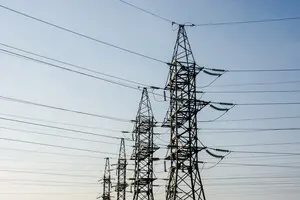
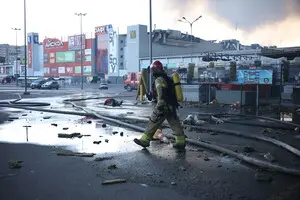
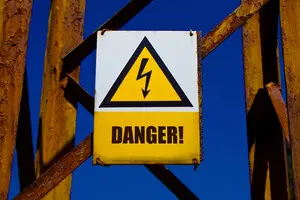
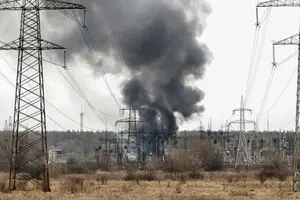
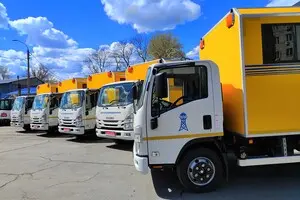
 Login with Google
Login with Google